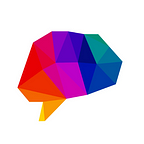The minimum requirement for digital accessibility
Consider the following scenario: you’re trying to navigate a website, but you can’t see the small fonts, the images don’t have explanatory text, and the navigation is confusing. This is a common scenario for someone with low vision.
This is where digital accessibility comes in, ensuring that people with disabilities have equal access to and use of digital content and services. But what does achieving the bare minimum of accessibility entail?
Many people, whether they are digital content creators, developers, designers, or simply want to ensure that the online world is inclusive for all, are asking this question.
In this blog post, we’ll explore the minimum requirement for digital accessibility, drawing on scientific research and expert recommendations to provide a comprehensive overview of what’s required to make digital platforms accessible. So, whether you want to improve the accessibility of your own digital content or simply want to learn more about this important issue, keep reading.
Minimum Digital Accessibility Standards and Web Content Accessibility Guidelines (WCAG)
The specific minimum standards for digital accessibility vary depending on the country and context, but there are some widely accepted guidelines that can be used as a starting point.
The World Wide Web Consortium’s Web Content Accessibility Guidelines (WCAG) are one of the most widely recognized guidelines (W3C). Support for WCAG as the minimum accessibility standard comes from a variety of sources, including:
- United Nations Convention on the Rights of Persons with Disabilities (UNCRPD) — The UNCRPD is an international treaty that sets out the rights of persons with disabilities. Article 9 of the treaty specifically addresses accessibility and calls for states to ensure that their websites are accessible to persons with disabilities. The UNCRPD references the WCAG as the standard for web accessibility. [1]
- The European Accessibility Act (EAA) — The EAA is a directive that sets out accessibility requirements for various products and services, including websites. The EAA references the WCAG as the standard for web accessibility. [2]
- Government regulations and guidelines — Many countries have laws and regulations that require government websites to be accessible to persons with disabilities. In the United States, for example, the Section 508 regulations require federal agencies to comply with WCAG 2.0 Level AA. In the United Kingdom, the Government Digital Service (GDS) has adopted WCAG 2.1 as the standard for government websites and so on. [3]
While the WCAG guidelines are not a legal requirement in all countries, they are widely recognized and adopted by many organizations around the world. Adhering to these guidelines is considered to be a best practice and the minimum requirement for digital accessibility and we’ll deep dive into WCAG 2.1 in a future blog post.
Challenges to Accessibility And The Role of Technology
Although having the WCAG guidelines as a starting point for digital accessibility is beneficial, there are still many challenges to ensuring that digital content and services are accessible. One challenge is the pace of technological change, which can make it difficult for organizations to keep up with the latest accessibility standards and guidelines.
Technology can play a significant role in digital accessibility, both in terms of creating barriers and in terms of removing them. For example, technologies like screen readers and magnifiers can help people who are blind or visually impaired access digital content. Similarly, closed captioning and transcripts can help people who are deaf or hard of hearing access audio and video content.
However, technology can also create barriers if it is not designed with accessibility in mind. For example, a website that relies heavily on mouse-based navigation can be difficult for people with mobility impairments to use. Likewise, a website that uses complex visual designs without appropriate alternative text can be difficult for people who are blind or visually impaired to navigate.
Therefore, it’s important for software designers and developers to consider accessibility from the outset, rather than trying to retrofit accessibility features after the fact.
In addition to technology, there are still many misconceptions and stereotypes about people with disabilities, which can lead to a lack of awareness and understanding of the importance of accessibility. For example, thinking that digital accessibility is only relevant to a small minority of users with disabilities, or a stereotype that individuals with visual impairments are unable to use computers or access digital content when in reality there are many assistive technologies available that enable them to do so. These misconceptions can hinder progress toward achieving digital accessibility and create barriers to access for individuals with disabilities.
Future of Accessibility
Despite these challenges, there is reason to be optimistic about the future of digital accessibility. New technologies, such as machine learning and artificial intelligence, are being developed that have the potential to greatly improve accessibility for people with disabilities. In addition, there is a growing recognition of the importance of accessibility, with more organizations committing to making their digital content and services accessible.
Summing Up
By following the WCAG guidelines and adopting best practices for accessibility, organizations can not only meet their ethical and legal obligations but also benefit from increased customer engagement and revenue. In fact, a report by the Return on Disability Group found that the disability market controls over $13 trillion in disposable income. By making digital content and services accessible, businesses can tap into this market and benefit from increased sales and customer loyalty [1]. With ongoing technological advances and a growing recognition of the importance of accessibility, we can work towards creating a more accessible and inclusive online world for all.
Have a story of your own? Write with us! Our community thrives on diverse voices — let’s hear yours.
References
- UN General Assembly. (2006). United Nations Convention on the Rights of Persons with Disabilities (UNCRPD). Retrieved from https://www.un.org/development/desa/disabilities/convention-on-the-rights-of-persons-with-disabilities/article-9-accessibility.html
- European Commission. (n.d.). The European Accessibility Act (EAA). Retrieved from https://ec.europa.eu/social/main.jsp?catId=1419
- Section 508 regulations. [Online] https://www.section508.gov/
- Return on Disability. (2020). The Global Economics of Disability. Retrieved from https://rod-group.com/sites/default/files/Summary%20Report%20-%20The%20Global%20Economics%20of%20Disability%202020.pdf
